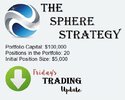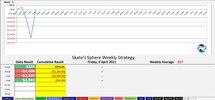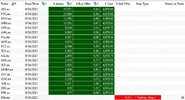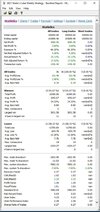- Joined
- 28 December 2013
- Posts
- 6,392
- Reactions
- 24,319
New traders attracted to the obvious break-out trading style become quickly disillusioned when their W% falls below 50%. They think they're doing something wrong. I've had people wonder why my long term W% isn't >50% if I'm a good trader. I was going to comment that one can increase the W% of a trend following system by taking smaller profits. Pleased to see that you realise this and you also know the cost of doing this (less profit).
so, the obvious question:
why would anyone prefer win rate over profit?
Personally, I don’t care about win rate. It doesn’t mess with my head on a day to day basis when live trading and it is certainly not high on my list when accessing systems.
Low win percentage
I made a series of posts about why "trend trading systems" have a low win rate. I also said that the "win percentage" of my combined trading results fell within acceptable limits for a trend trading strategy. I accept a low win rate for a trend system is just the nature of the beast.
At the other end of the spectrum
Trading a "mean reversion strategy" has a high win rate with lower returns. You can have it both ways.
I want to explore why "trend trading systems" have a low win rate.
To increase your win percentage, you have to accept lower profits
I'm not a fan of that quote but for some, it makes perfect sense. We all need to trade a strategy we are comfortable with. The last few weeks have been tough "trading a breakout strategy" but this week's results (so far) make us look like trading geniuses.

I think your systems have done a stellar job.
@ducati916, thank you for your kind appraisal.
Skate.









